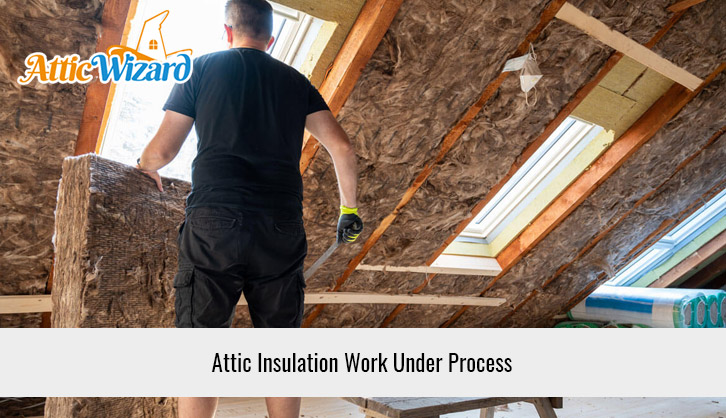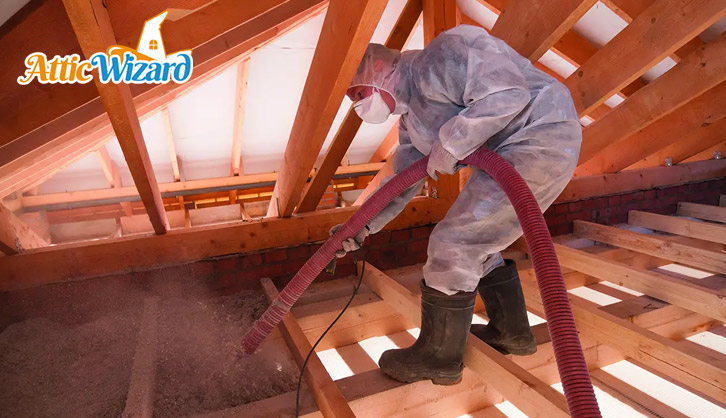How Much Insulation Do You Need In Your Attic For Maintaining Quality Home
Learn How Much Insulation You Need to Provide in Your Attic to Avoid Potential Hazards.
While most homes do have insulation, have you ever questioned “how much insulation do i need”? Proper insulation provides a foolproof shield between you and the ever-changing weather conditions. You may be paying higher energy bills if you don’t have enough insulation. New attic insulation can be a smart investment, especially if you know the long-term benefits it may produce.

Applying further attic insulation to your home can help you save money by allowing your home to retain more heat and cool. But the question is how much insulation should I have in my attic?
Calculating the Amount of Insulation Required
To establish how much insulation is already laid in the attic, you need to go up there. Measurements are a simple task that you may complete with the help of a measuring tape. Simply calculate the present insulation’s depth against the adjacent joists. The insulation should extend several inches beyond the joists as a general rule. However, you’ll need the exact length at the end. The amount of insulation that is deemed suitable depends on the local climate.
Compared to climates further south, cooler climates demand a couple of extra inches of insulation. This increased insulation protects against the intense cold and prolonged winters that are more typical in the north. It is a known fact that a thick layer of insulation is always beneficial, and the materials chosen have an impact on overall efficiency. Some substances are more insulation-driven than others, allowing them to reduce heat loss more effectively. The R-Value measures the resistance to heat flow.
Factors that Ensure optimal thermal performance and energy efficiency.
- R-Value Determination: Assess the recommended R-value for your region based on climate zone.
- Insulation Type: Choose between fiberglass batts, blown-in cellulose, or spray foam insulation.
- Attic Area Measurement: Measure the total square footage of your attic space.
- Insulation Thickness: Determine the required insulation thickness to achieve the desired R-value.
- Existing Insulation Assessment: Evaluate the condition and R-value of existing insulation before adding new layers.
- Thermal Bridging Prevention: Identify and address areas where heat transfer occurs through structural elements.
- Air Sealing: Ensure proper air sealing to prevent drafts and improve insulation effectiveness.
- Moisture Control: Consider vapor barriers and proper ventilation to manage moisture levels in the attic.
- Insulation Coverage: Ensure complete and even coverage without gaps or compression.
- Professional Consultation: Seek advice from insulation experts to ensure accurate calculations and optimal insulation performance.
Ensure that your insulation has the proper R-Value
Even if your insulation extends beyond the floor joists, a low R-Value indicates that it isn’t holding as much heat as you would like. In cooler climes, an R-Value of 38 or greater is recommended, which equates to 12-14 inches of insulation. Depending on the quantity of insulation used, you may require more or less as per real-time assessment.
What is the Best Attic Insulation?
Home insulation is made from a variety of materials. Each of these substances contains a different R-Value, which you should be aware of before determining which insulator is superior. We’ll go over the four most frequent types and R-Values they have. Remember that the climate influences the utility of R-Value for appropriate attic insulation.
- Fiberglass: Fiberglass insulation comes in a variety of forms, including loose fibers and standardized batts. You can presume an R-Value of 2.2 to 3.8 per inch from these two forms of fiberglass insulation.
- Cellulose: Manufacturers use shredded denim or paper fibers from waste newspapers to make the majority of cellulose-based insulation. It’s one of the most superior insulation, with R-Values ranging from 3.1 to 3.8 per inch.
- Mineral Wool: Manufacturers shred minerals and rocks to create soft attic insulation. Mineral wool often called stone wool is formed of minerals such as basalt. Industrial slag or even glass can be used to manufacture it. R-Values for mineral wool insulation vary from 2.2 to 4.2 per inch.
- Foam Spray: Contractors trigger spray foam insulation directly onto the surface instead of applying it in rolls or batts. This foam type comprises various composite components and molds to the contour of the environment. Spray foam insulation, with R-Values ranging from 3.5 to 8 per inch, can provide some of the fittest R-Value features.
How Can You Tell If Your Attic Is Insulated Properly?
If your attic lacks proper insulation, you’ll notice persistent leaks, mildew odors, and fluctuating inside temperatures. But how can you confirm if you have enough insulation in your attic? You shouldn’t observe any large swings in your energy expenses because you need to account for draughty places or cold spots. If you’re still not sure if your attic has proper insulation, climb the attic and check it out. Overall, your attic is in decent health if you aren’t experiencing trouble with frozen pipes. Besides, you may feel a conducive home temperature. Also, you may observe reduced energy bills.
Is It Necessary To Remove Old Attic Insulation Before Installing New?
Before installing a new layer of attic insulation, you should inspect it thoroughly. It may appear cost-effective to just apply a fresh layer over the old, but you overlook problems such as rodent or mold hazards. It is preferable to replace any worn-out attic insulation that is crumbly, discolored, smells terrible, or moist. Over time, condensation, mold, moisture, or vermin damage and deteriorate insulation.
To encourage proper ventilation and prevent heat loss, insulation should have some airiness. If you want to install a specific type of insulation than the one you have now, you must first replace the old one. If you’re replacing fiberglass insulation with another type, hire a professional insulation removal service like Attic Wizard. You should also check old insulation for pollutants. You can usually cover older insulation with a roll or blown loose coat of insulation.

When Should You Replace Attic Insulation?
The majority of attic insulation in can last for 80-100 years. However, conventional insulation loses its effectiveness after 15 years. If you observe any of the following symptoms, you may need to replace the attic insulation.
- During the cold season, there is an upsurge of pests such as flies, bats, rodents, raccoons, or squirrels in the attic.
- You may observe pipe leakages and notice mold or mildew infesting the entire home.
- Energy bills are abnormal, and it is difficult to maintain an optimum temperature.
- The attic insulation is flat, cracking, and contains apparent wet or moldy spots, as well as droppings.
Use the appropriate R-value and superior kind of insulation during the removal of your attic insulation. Blown loose insulation, Fiberglass batting, spray foam, mineral wool, or foils are all multiple options for the needful.
Conclusion
Choosing a high R-value content for your attic insulation has numerous advantages. With an attic insulation level of 10 to 14 inches, you can decrease excessive moisture, extensive damage, and hazards of cold weather. A professional insulation service provider helps you select the ideal insulation based on its efficacy and ability to keep cold, pests, and moisture out. We especially focus on your home’s energy efficiency and comfort in the long run.
